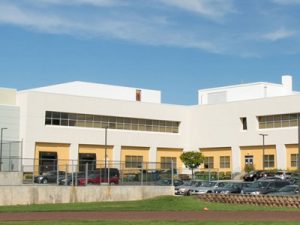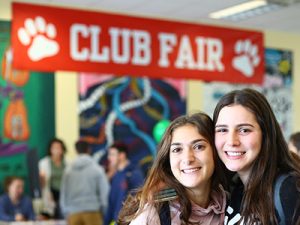Hands on with Science!
March 19, 2015
From the many disciplines that comprise the science department here at Frisch come many creative and innovative ways to help our students explore the complexities of the world in which they live. We have found that the best way to learn science is to do science. At every level, a hands on approach to learning both engages the minds of our students and ignites a passion for continued studies.
 In biology, after discussing the laws of inheritance elucidated by Mendel more than 150 years ago, the freshman as “Bothead parents” created “Bothead progeny”. The age old question of “why are my eyes blue” was demonstrated as the traits of the baby Botheads clearly represented a random combination of the genes of the parents. The students in Animal Behavior took a trip this week to the Bronx Zoo. After learning about how and why ethologists (scientists that study animal behavior) do their jobs and after practicing these skills with videos and in-class projects, the students were prepared to put their animal research skills to use. Students chose an animal, clearly defined its behaviors (to limit bias!), and created a tally of those behaviors on an ethogram (a table of animal behaviors). The students will have the opportunity to analyze their data, draw inferences, and present their findings to the class. In the Science Research class, students are busy analyzing novel gene sequences from a plant species called duckweed. To determine the size of those sequences, the students purified DNA and using gel electrophoresis were able to determine the size of the DNA sequence and the quality of their purified sample. The gels may look like a scene from a CSI episode but actually require mastering some very sophisticated techniques in molecular biology.
In biology, after discussing the laws of inheritance elucidated by Mendel more than 150 years ago, the freshman as “Bothead parents” created “Bothead progeny”. The age old question of “why are my eyes blue” was demonstrated as the traits of the baby Botheads clearly represented a random combination of the genes of the parents. The students in Animal Behavior took a trip this week to the Bronx Zoo. After learning about how and why ethologists (scientists that study animal behavior) do their jobs and after practicing these skills with videos and in-class projects, the students were prepared to put their animal research skills to use. Students chose an animal, clearly defined its behaviors (to limit bias!), and created a tally of those behaviors on an ethogram (a table of animal behaviors). The students will have the opportunity to analyze their data, draw inferences, and present their findings to the class. In the Science Research class, students are busy analyzing novel gene sequences from a plant species called duckweed. To determine the size of those sequences, the students purified DNA and using gel electrophoresis were able to determine the size of the DNA sequence and the quality of their purified sample. The gels may look like a scene from a CSI episode but actually require mastering some very sophisticated techniques in molecular biology.
 Need a bright idea to demonstrate the different categories of chemical reactions? In lab, students were given the opportunity to predict the outcome of certain classes of chemical reactions by examining the products of those reactions. Magnesium, produced by a synthesis reaction burns with a startling, bright white flame. When studying the decomposition of hydrogen peroxide , a glowing splint will burst into flame as oxygen is released. Exploding the hydrogen given off when zinc is dropped into acid also dramatically illustrates single replacement reactions. The goopy precipitate that formed during a double replacement reaction was appreciated as well.
Need a bright idea to demonstrate the different categories of chemical reactions? In lab, students were given the opportunity to predict the outcome of certain classes of chemical reactions by examining the products of those reactions. Magnesium, produced by a synthesis reaction burns with a startling, bright white flame. When studying the decomposition of hydrogen peroxide , a glowing splint will burst into flame as oxygen is released. Exploding the hydrogen given off when zinc is dropped into acid also dramatically illustrates single replacement reactions. The goopy precipitate that formed during a double replacement reaction was appreciated as well.
While the laws of physics might seem abstract to most, there is no better tool than a slinky to illustrate some of the major properties of waves. The students held a slinky by opposite ends and shook. The slinky’s sinusoidal undulations illustrated the crests and troughs of a transverse wave. As they pushed one end of the slinky and watched a ripple slide to the other end they were able to witness the compression’s and rarefaction’s of a longitudinal wave. The finer points of waves were studied in the lab in a ripple tank with green water to make the waves more visible. The students observed reflection and diffraction around barriers they set up in the ripple tank.







